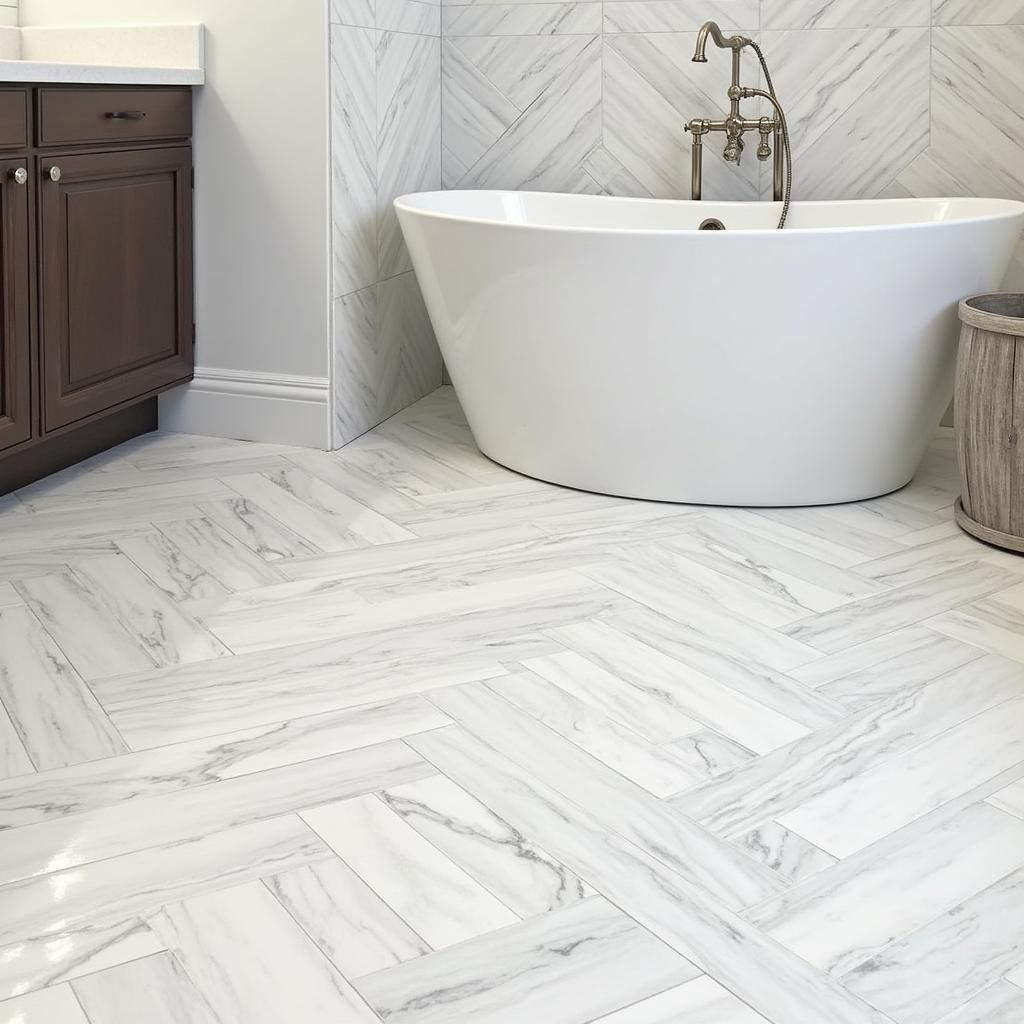Herringbone tile is a classic pattern that has been used for centuries in flooring, backsplashes, and other decorative applications. Its distinctive V-shaped arrangement creates a dynamic and visually appealing design that adds a touch of elegance to any space. Whether you’re aiming for a modern, traditional, or eclectic look, herringbone tile offers a versatile and stylish solution. This comprehensive guide will explore everything you need to know about herringbone tile, from its rich history to its modern applications, and how to choose the perfect style for your next project.
The History and Evolution of Herringbone Tile
The herringbone pattern’s origins can be traced back to the Roman Empire, where it was used in road construction for its strength and stability. The interlocking design allowed for even weight distribution, making the roads more durable. Over time, the pattern transitioned from its purely functional use in roadways to become a decorative element in architecture and interior design. From grand palaces to humble homes, the herringbone pattern has graced floors, walls, and even textiles for centuries. Its enduring popularity is a testament to its timeless appeal.
Choosing the Right Herringbone Tile for Your Project
The versatility of herringbone tile extends to the wide range of materials available, each offering unique characteristics and benefits. Porcelain and ceramic tiles are popular choices for their durability, affordability, and ease of maintenance. Natural stone options like marble and travertine add a touch of luxury and sophistication, while glass tiles create a shimmering, reflective surface. Understanding the pros and cons of each material will help you make an informed decision.
Material Considerations for Herringbone Tile
When selecting your herringbone tile, consider the space where it will be installed. For high-traffic areas like entryways and kitchens, durable porcelain or ceramic tiles are ideal. In bathrooms or backsplashes, where water exposure is a factor, opt for water-resistant options. For accent walls or decorative features, consider natural stone or glass tiles to elevate the aesthetic.
Installation and Maintenance of Herringbone Tile
While the herringbone pattern adds visual interest, it also requires more meticulous installation compared to straight-lay patterns. Proper planning and precise measurements are crucial to ensure the pattern flows seamlessly. Hiring a professional tile installer is recommended, especially for complex projects. While herringbone tile is generally durable and easy to maintain, regular cleaning is essential to prevent grout discoloration and maintain its beauty.
Tips for Maintaining Your Herringbone Tile
Regular sweeping or vacuuming will remove loose dirt and debris. Use a pH-neutral cleaner specifically designed for tile and grout to avoid damaging the surface. Avoid abrasive cleaners and scrub brushes, which can scratch the tile. Sealing the grout periodically will help prevent staining and discoloration.
 Herringbone Tile Bathroom Floor
Herringbone Tile Bathroom Floor
Herringbone Tile in Different Design Styles
From classic to contemporary, herringbone tile seamlessly integrates into various design aesthetics. In traditional settings, it adds a touch of old-world charm, while in modern spaces, it creates a dynamic focal point. Its adaptability makes it a popular choice for designers seeking to create unique and visually appealing interiors.
Modern Applications of Herringbone Tile
Herringbone tile is not limited to flooring. It can be used creatively in backsplashes, shower walls, fireplace surrounds, and even accent walls. Experimenting with different tile sizes, colors, and materials allows for endless design possibilities. Consider using contrasting grout colors to further enhance the pattern and create a striking visual effect.
Conclusion: Elevating Your Space with Herringbone Tile
Herringbone tile offers a timeless and elegant design solution for any space. Its versatility, durability, and visual appeal make it a popular choice for homeowners and designers alike. By carefully considering the material, installation, and design style, you can create a truly stunning and unique space with herringbone tile.
FAQ
- What is herringbone tile? Herringbone tile is a pattern of tiles arranged in a V-shape, resembling the bones of a herring fish.
- Is herringbone tile expensive? The cost varies depending on the material. Ceramic and porcelain are generally more affordable than natural stone.
- Is herringbone tile difficult to install? It requires precise measurements and planning, so professional installation is recommended.
- How do I clean herringbone tile? Use a pH-neutral cleaner and avoid abrasive materials.
- What are the different types of herringbone tile? Common materials include ceramic, porcelain, marble, travertine, and glass.
- Where can I use herringbone tile? Floors, walls, backsplashes, shower walls, fireplace surrounds, and accent walls.
- What are the benefits of using herringbone tile? It adds visual interest, durability, and timeless style to any space.
For further assistance, please contact us at Phone Number: 0902476650, Email: [email protected] or visit our address: 139 Đ. Võ Văn Kiệt, Hoà Long, Bà Rịa, Bà Rịa – Vũng Tàu, Việt Nam. We have a 24/7 customer service team ready to help.





